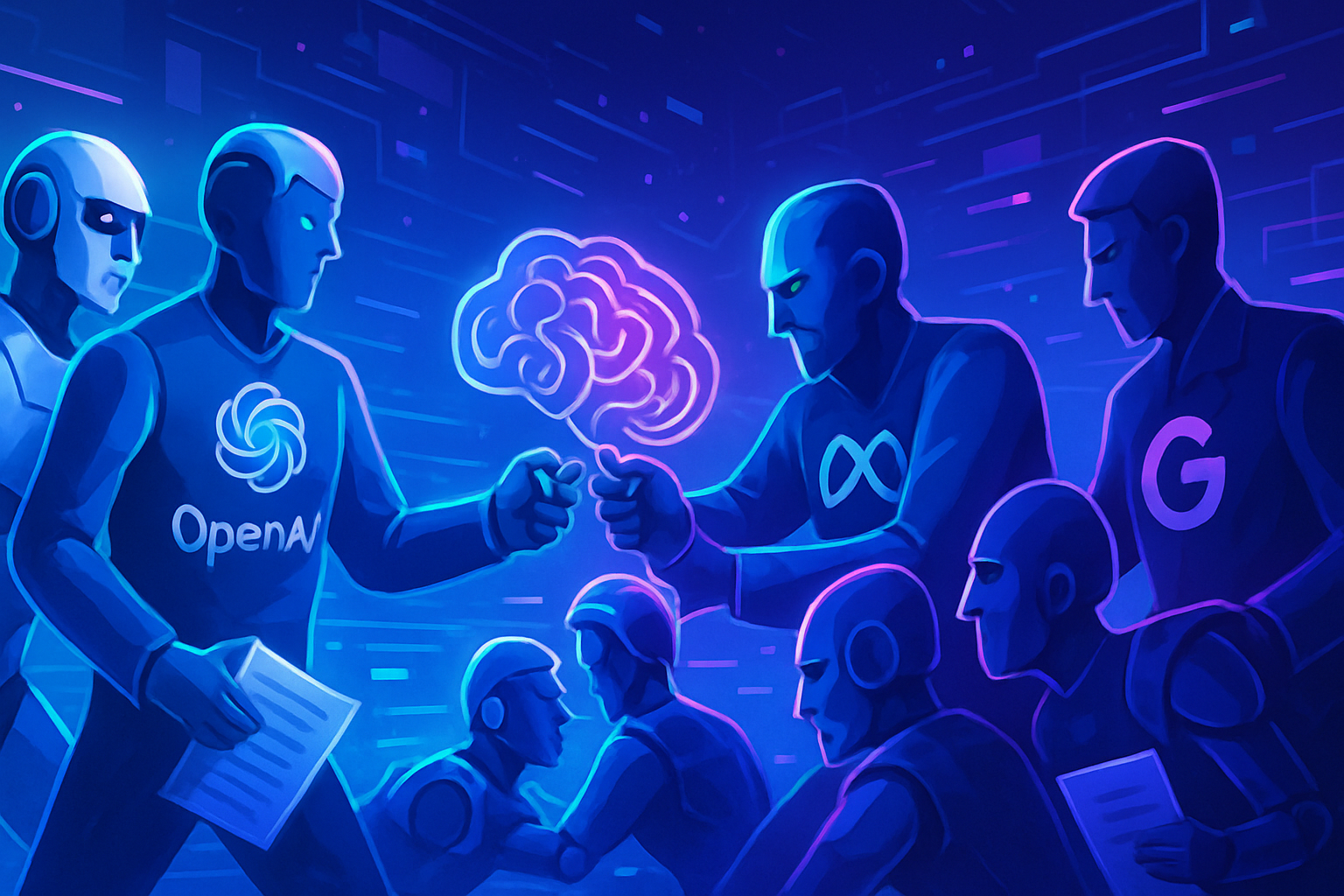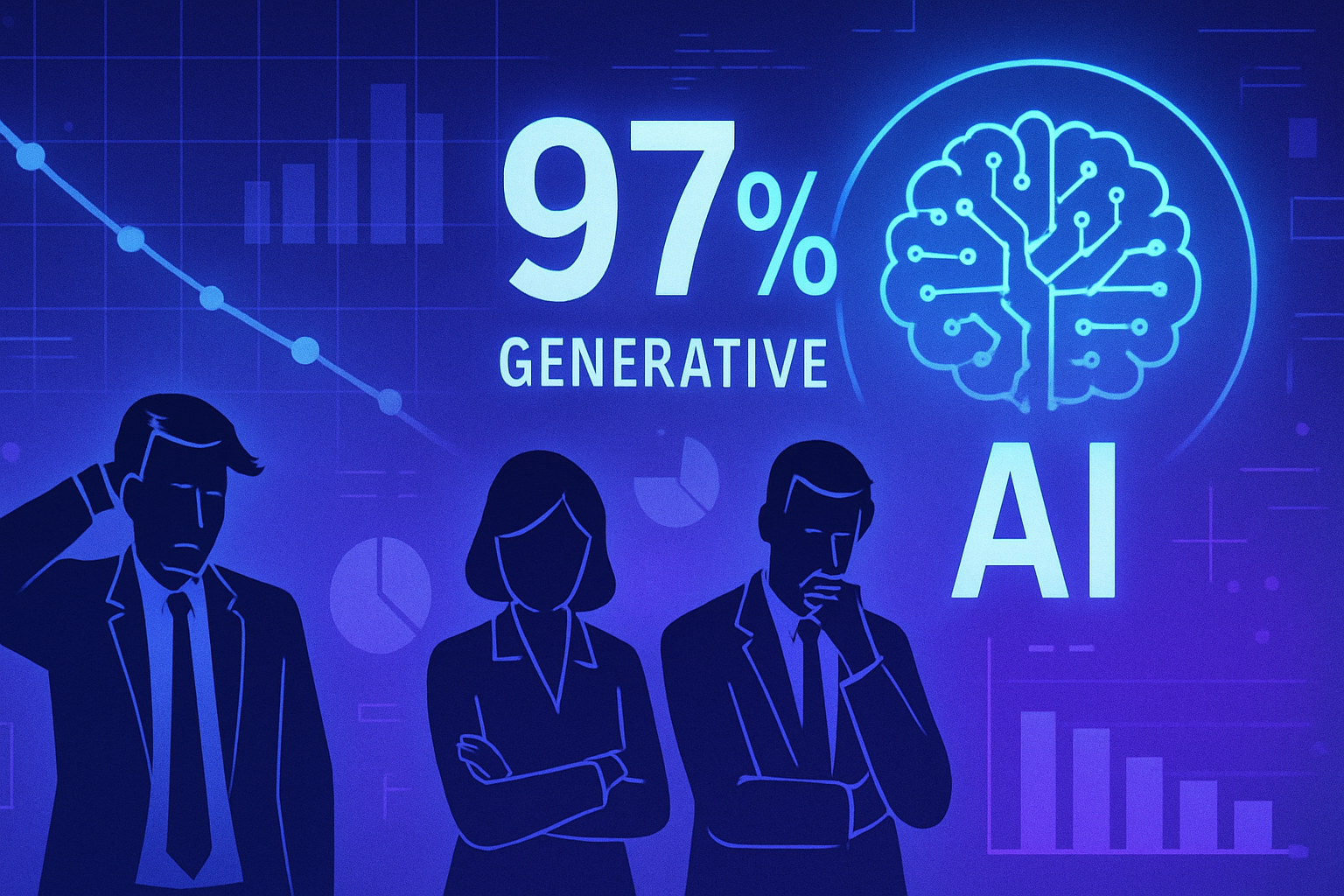Faced with colossal economic challenges, the tech giants are competing relentlessly. OpenAI, Meta, and Google are deploying aggressive strategies. Their goal? To acquire the best talents in artificial intelligence. Astronomical sums are circulating, resulting in a genuine transfer market in the tech sector.
The market leaders covet innovative start-ups to consolidate their position. This tug of war reflects an intense battle for influence, with notable repercussions for the global digital future. These are the subtle and calculated moves that are redefining the contours of innovation in artificial intelligence.
Strategic movements in AI
The competition between OpenAI, Meta, and Google is intensifying as these tech giants roll out bold poaching and acquisition strategies. Investments in the artificial intelligence (AI) sector are reaching staggering heights, demonstrating an unprecedented influence war.
Colossal offers to attract talent
Google recently opened the floodgates with an impressive amount of $2.4 billion to attract executives from the AI-focused start-up Windsurf. This aligns with a trend where salaries for AI experts rival those of top athletes, as evidenced by the $200 million salary offered by Meta to Ruoming Pang, former supervisor of AI model research at Apple.
The aggressive recruitment of these AI specialists mirrors strategies from the sports transfer market, where talents are negotiated like influential athletes. Mark Zuckerberg, CEO of Meta, is also unveiling ambitious projects, including the construction of data center infrastructures with a power equivalent to several nuclear reactors.
The strategic stakes of acquisitions
Acquisitions are not limited to astronomical amounts. They also involve crucial technological know-how. OpenAI, Meta, and Google are carefully monitoring emerging trends, seeking to seize innovative startups that offer disruptive solutions.
The establishment of strategic partnerships between AI giants and startups is becoming an obvious tactic. Companies that position themselves at the head of the race ensure undeniable technological advantages, strengthening their capabilities in the face of increasingly fierce competition.
Meta’s ambitious projects and the future of the sector
Meta stands out with promises of large-scale projects. The data center model mentioned by Zuckerberg attracts attention not only for its size but also for its technological potential. This type of investment illustrates a desire to accelerate the transition to more powerful AI solutions that are better integrated into everyday solutions.
Preparing for future challenges
In the face of rapid advancements in AI, companies must also develop defensive strategies to guard against growing risks. Cyberattacks are becoming more sophisticated, and the need for robust defenses has never been more pressing. Moreover, developing such strategies is essential in this environment where threats are diversifying.
Discussions surrounding AI ethics raise questions, particularly regarding the societal values that these technologies seem to challenge. Initiatives by controversial figures like Elon Musk intensify this debate as society explores levels of autonomy for AI systems.
Innovations and evolutions
At the same time, recent developments enable AI to learn to recognize its own uncertainties. This represents a new advancement in the field, opening up unexplored horizons. AI could become an actor prepared to interact in complex scenarios, increasing its adaptability in the face of contemporary challenges.
For an in-depth overview of the impact of new technologies on SERP and their consequences for SEO, check the following link: The impact of AI on SEO.
Aspirations in the field of AI are redefining the standards of the tech sector, establishing a new balance between innovation and ethical concerns. Major players must navigate these turbulent waters, where talent and resources become the keys to sustainable dominance.
User FAQ: Strategic movements in AI
What are the main stakes of poaching in the AI sector?
The stakes are multiple, notably access to sharp skills, consolidation of key technologies, and maintaining a competitive edge in a rapidly evolving market.
How do companies like OpenAI, Meta, and Google determine the value of talent in the AI field?
They assess technical skills, experience in innovative projects, as well as the potential impact of the talent on their strategy and technological development.
What strategies are used by these giants to strengthen their AI teams?
Companies invest in attractive compensation packages, offer stimulating work environments, and develop partnerships with startups to attract the best engineers.
Why are investments in data centers crucial for these companies?
Data centers are essential for processing and storing the large amounts of data necessary for training AI models, which improves their performance and execution speed.
What long-term impact do these strategic movements have on the AI market?
In the long run, these movements could lead to an increased concentration of resources and technologies, but they could also foster significant innovations in the field of artificial intelligence.
How do these poachings influence the dynamics of the AI startup market?
Poachings create a more competitive market where startups must offer attractive conditions to retain their talents while constantly seeking to innovate to avoid being outclassed by the giants.
What role do investments in research and development play in these strategies?
Investments in R&D are fundamental to developing new technologies and staying at the forefront of innovation, thus ensuring an edge over competitors and improving existing solutions.
Does the talent battle in AI lead to notable side effects?
Yes, it can cause salary inflation for AI specialists and potential increased turnover in companies struggling to retain their talents in the face of competitive offers from industry giants.
What are the emerging trends in talent management in AI?
Trends include approaches focused on workplace well-being, ongoing training programs, and initiatives promoting diversity to maximize the creative potential of teams.






